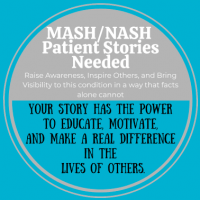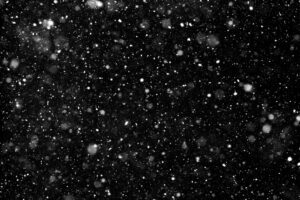In this insightful article, Sierra Domb, Founder and CEO of the Visual Snow Initiative (VSI), a nonprofit organization dedicated to raising global awareness, providing education and resources, advocating for patients, and advancing treatment and research for Visual Snow Syndrome (VSS), shares her personal journey with this neurological condition, which affects millions worldwide. Sierra opens up about her experiences living with VSS, the challenges of diagnosis, and how she transformed adversity into action to create lasting, positive change. She also discusses her vision for the future of the condition, her personal passions and hobbies, and the driving force behind sharing her story — aiming to inspire and make a meaningful impact for others facing similar struggles.
The Start of My Journey with Visual Snow Syndrome
My journey with VSS began in 2015, at the age of 21, when I experienced the onset of this debilitating neurological condition. Characterized by constant visual disturbances, sensory disruptions, and other symptoms that even medical professionals could not explain, VSS turned my world upside down. At the time, I was studying communication and film, hosting my own radio show, and doing voice acting for work. However, the severity of my symptoms forced me to leave university. The visual distortions prevented me from driving, and I was uncertain if my vision would further deteriorate. Doctors, unable to provide answers, feared I might go blind or even die. This profound uncertainty and lack of understanding were deeply isolating and frightening.
After facing marginalization and mistreatment from a medical community unfamiliar with VSS, I knew I needed to take action — not just for myself, but for countless others navigating similar challenges. To equip myself with the knowledge and skills needed to advocate for VSS and create meaningful change, I shifted my focus to studying neuroscience, philanthropy, activism, and innovations in healthcare. I strived to foster a more informed, inclusive, and supportive world for individuals of all ages affected by VSS, empowering them with resources, building awareness through education, and advocating for improved treatment development and research.
In 2018, I took the first step toward fulfilling that mission by organizing the first Visual Snow Conference and founding VSI to create hope, answers, and action for individuals affected by VSS worldwide.
Living with Visual Snow Syndrome: The Devastating Impact and Diagnostic Odyssey
For many, living with Visual Snow Syndrome (VSS) can be a complex and life-altering experience. The condition impacts vision, hearing, cognition, sensory processing, and overall quality of life, making even routine activities challenging. Its hallmark symptom is persistent visual disturbances, such as constant “visual snow” or static, flickering dots, and flashing lights, visible 24/7, whether the eyes are open or closed. These unrelenting visual symptoms create a disorienting and exhausting reality, where the brain struggles to process sensory information.
However, VSS is not limited to its visual symptoms. Classified as a network brain disorder, it affects multiple interconnected brain regions, leading to disruptions in sensory processing. Many individuals experience a range of non-visual symptoms, including tinnitus, migraines, dizziness, cognitive difficulties often referred to as “brain fog,” and heightened sensitivity to light, sound, or touch. These symptoms can make daily life overwhelming and unpredictable, affecting sleep, productivity, and overall well-being.
Emotionally, VSS can take a significant toll. The constant symptoms and uncertainty surrounding the condition often lead to anxiety and depression. Many individuals feel misunderstood or isolated, as the lack of awareness about VSS makes it difficult for others to grasp its full impact. The unpredictability of symptoms, coupled with the fear of worsening health, amplifies these challenges, creating an excessive mental and emotional strain.
The journey to diagnosis is another source of frustration. Many individuals, like I did, encounter physicians who have never heard of Visual Snow Syndrome. This lack of awareness often results in feelings of invalidation, as symptoms are dismissed or misattributed to unrelated conditions. Patients may endure unnecessary tests and treatments as doctors attempt to piece together the cause of their symptoms. The repeated consultations with different specialists, without clear answers, can be deeply discouraging. Living with a condition no one can explain, and not knowing what lies ahead, often creates a life engulfed in overwhelming fear and anguish.
Personally, my challenging journey with VSS, compounded by the new symptoms that derailed my life, along with the marginalization, misdiagnoses, and mistreatment from the medical community at that time, led to the development of Post-Traumatic Stress Disorder (PTSD).
Early on, I faced disbelief, misdiagnoses, and a lack of understanding from healthcare providers. However, through persistence and advancements, I have experienced significant progress. Living with Visual Snow Syndrome has been an immense challenge, but my symptoms have improved significantly thanks to treatments developed by VSI — treatments that didn’t exist when I first began my journey.
Today, with the official diagnostic criteria established by VSI, individuals can approach healthcare professionals with a more structured framework. VSS is diagnosed based on symptoms and clinical evaluation, including a detailed medical history, eye exams (which often show normal results), and sometimes MRI or EEG scans to rule out other conditions. As VSS is a diagnosis of exclusion, it requires expertise, and specialists such as neuro-ophthalmologists and other experienced healthcare providers are best equipped to manage it.
To support patients further, VSI created the first global directory of physicians knowledgeable about VSS, along with additional resources, making the diagnostic process more accessible and less daunting for patients worldwide. These advancements represent tangible progress toward changing a historically misunderstood and neglected condition into one that is steadily gaining recognition and support within the medical field, paving the way for positive outcomes and improved quality of life for patients.
The Future of Visual Snow Syndrome
I have always wanted Visual Snow Syndrome (VSS) to be not only recognized by the medical community but also validated. While conditions like fibromyalgia took several decades to receive an official ICD code (International Classification of Diseases), I was determined to pursue the same for VSS. The process requires navigating multiple layers of committees within the World Health Organization and demands extraordinary effort and diligence. But I believed, “Nothing ventured, nothing gained.”
In just two years of dedicated work, my team and I secured two ICD-11 codes — one for Visual Snow Syndrome itself and another for its hallmark symptom, Visual Snow (the constant presence of static or snow-like dots throughout the visual field, 24/7). Starting in 2025, VSS will be officially recognized by virtually every country, government, and healthcare provider. This accomplishment is not only a monumental milestone for both the Visual Snow and medical communities but also a deeply personal victory for me.
As we continue our work, I am hopeful that the future of Visual Snow Syndrome (VSS) can be defined by hope, scientific progress, and innovative solutions. A collaborative global effort involving researchers, healthcare professionals, and advocates has driven significant advancements in understanding and addressing this complex neurological condition. By fostering collaboration among global researchers, I facilitated efforts that led to the official scientific recognition of VSS and the development of treatments where none previously existed. These initiatives also resulted in the creation of the first diagnostic criteria for VSS, the first global directory of physicians knowledgeable about the condition, and essential resources to improve accessibility and support for both healthcare providers and patients.
Ongoing research continues to shape the future of VSS, exploring its biological basis and pathophysiology. Scientists are investigating brain network mechanisms, neurotransmitters, biomarkers, and symptomatology to expand understanding and guide the development of targeted solutions. While the ultimate goal is to find a cure, current efforts are focused on creating safe, tailored treatments — both noninvasive and pharmacological — that address the diverse needs, symptoms, and medical histories of individuals with VSS worldwide.
This approach ensures that people struggling with VSS today have access to treatment options that could potentially alleviate their symptoms and improve their quality of life. By offering a personalized and adaptive approach to care, these strategies provide hope for effective and accessible solutions, empowering individuals to manage their condition while long-term solutions and a cure are pursued.
The first reported cases of VSS date back to 1944, but the condition was not officially recognized as a distinct medical entity until recently. Through ongoing research and advocacy, what was once an unrecognized and misunderstood condition has evolved into a distinct and identifiable medical disorder. For decades, individuals with VSS faced a lack of answers and resources, but the advancements achieved since 2018 have marked a significant turning point. Recognition and understanding are now at their highest levels, yet the journey is far from complete, and the need for continued progress remains critical.
As we move forward, the future of VSS can be defined by improved understanding, educational and supportive resources, additional effective treatments, and ultimately, a cure — with hope that future generations do not have to go through what I did, reducing the prevalence of marginalization, misdiagnosis, and mistreatment that so many have experienced.
VSS is Part of My Story, But It’s Not the Whole Story
Visual Snow Syndrome (VSS) is part of my life’s tapestry, and I own it. However, like my other medical conditions — Autoimmune Dysregulation and Erythromelalgia, which I was born with — VSS, which I developed in young adulthood, and the PTSD stemming from my harrowing medical trauma, do not shape all of who I am.
I am deeply passionate about empowering others to overcome health challenges, particularly those related to neurological conditions. My work focuses on bridging the gap between complex concepts and real-world applications, ensuring that individuals of all health literacy levels can access the information they need to make informed decisions about their health.
Whether through public speaking, writing, or casual conversations, I value opportunities to build understanding, learn from others, and inspire action. My TEDx talk, “What is Visual Snow? Transforming Anguish into Action,” exemplifies this mission — using my story to raise awareness and empower others to turn pain into purpose. I believe that many negative and traumatizing events can become catalysts for positive reform if we choose to act. If you do nothing, nothing will change. Even small progress is still progress, laying a foundation for what wasn’t there yesterday.
Nonconformity, resilience, and independent thinking form the cornerstones of who I am. I am passionate about showing that kindness, compassion, intelligence, and strength are not mutually exclusive — they coexist and strengthen one another. Life and human emotions are nuanced; you can struggle and still be strong, or be kind while also deeply intelligent. Too often, people attempt to categorize others, placing them into narrow definitions, when in reality, we are meant to be multifaceted individuals.
For instance, I have a profound love for the sciences, particularly neuroscience and behavioral sciences, but I also find immense joy in creative pursuits like photography and voice acting. I appreciate the beauty of nature outdoors, but I also enjoy playing video games indoors. These diverse passions remind me that identity is not singular — it is a rich tapestry of varied interests and strengths, woven together to shape who we are.
The Purpose of VSI and the Motivation Behind Sharing My Story
Although I’m naturally shy, my passion for enacting positive change for VSS drives me to push past that shyness. It’s a cause worth fighting for. If sharing my story and the work we do at VSI helps even one person, it makes it all worthwhile.
I shared my story because I understand how isolating and overwhelming it can be to live with a condition like Visual Snow Syndrome. My goal is to give a voice to those who feel unheard and to show them that there is hope, progress, and a community of people who not only understand but are also fighting for them.
Through our efforts with the Visual Snow Initiative (VSI), we’ve made significant strides in improving diagnosis, advancing research, and developing treatments for VSS. By sharing my journey, I hope to inspire others to persevere, advocate for themselves, and join the collective work that will bring us closer to a cure. I believe that every story has the power to create change, and together, through action, we can pave the way for a future where the world is more accessible, educated, inclusive, and supportive for those affected by VSS.
When I was first diagnosed with VSS, there were only a handful of research papers available online. Since then, VSS research has quadrupled, and my team and I created the Visual Snow Initiative website to serve as the resource I wish had been available at the start of my journey. For those living with VSS, their loved ones, or anyone interested in learning more about the condition or joining our cause, we hope these resources are both educational and empowering. Together, we can continue the momentum of change and create a brighter future for those impacted by VSS.
Learn more and access helpful resources at: www.visualsnowinitiative.org

Source: Sierra Domb






